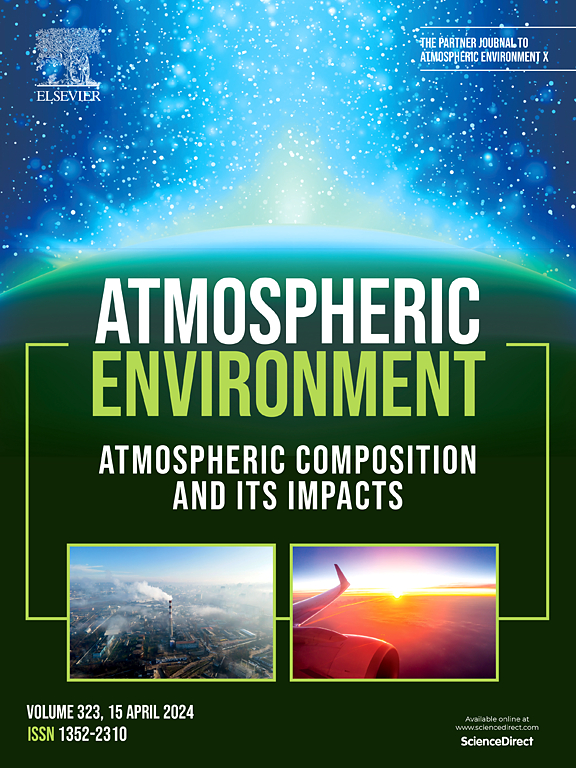Elucidating the origins of ultrafine particles in a major city using long-term datasets: Evidence of a new midday process
IF 4.2
2区 环境科学与生态学
Q2 ENVIRONMENTAL SCIENCES
引用次数: 0
Abstract
Ultrafine particles (UFPs) are both directly emitted from human activities and produced through atmospheric processes. The origins of ultrafine particles were explored in an urban area by analyzing 6 to 520 nm particle size data collected from 2006 to 2021 near a busy roadway in downtown Toronto, Canada. Days were classified into five categories: Strong Nucleation, Midday Pollution, Traffic Pollution, Baseline, and Mixed. Strong Nucleation days, which comprised about 6% of the days, showed long nucleation events (¿ 3 hr) with an average particle number concentration of 3.1±0.1 #/ around noon (10 am to 2 pm). Midday Pollution days also exhibited higher particle concentrations around noon with an average of 3.3±0.06 #/. The higher number concentrations on these days appeared to arise from locally emitted UFP and be associated with enhanced production of UFP within vehicle exhaust plumes. The Traffic Pollution days showed morning traffic emissions, with no midday rise. The average total UFP concentration around the morning rush hour (6 am to 9 am) on these days was 2.1±0.2 #/. About 27% of the days had lower particle number concentrations (daily average: 1.2±0.2 #/) throughout the day. The number concentrations were lower on these “Baseline days” and the influence of traffic emissions was also lower but still observable in the diurnal pattern. Lastly, Mixed days were the days that showed higher than Baseline concentrations of UFP around the morning rush hour (2.0±0.06 #/) or midday (2.3±0.1 #/); UFP on these days came from a mix of traffic pollution, nucleation event, or a midday process, with no one of these sources clearly dominant. These days could not be categorized into any of these categories with confidence. Analysis of the organic and inorganic speciation, trace elements, and traffic-related air pollutants suggested that the UFP on Midday Pollution days came from vehicle emissions enhanced by reactions within their exhaust plumes. Moreover, the time series analysis of these categories showed that the frequency of Midday Pollution days has decreased over the years with the number of Baseline days correspondingly increasing. Meteorological analysis showed that Midday and Traffic Pollution days happened more often in winter while Strong Nucleation days were more frequent in summer. This study has shown that higher midday UFP concentrations do not arise only due to nucleation events and that a previously unrecognized Midday Pollution process can be a large contributor.

求助全文
约1分钟内获得全文
求助全文
来源期刊

Atmospheric Environment
环境科学-环境科学
CiteScore
9.40
自引率
8.00%
发文量
458
审稿时长
53 days
期刊介绍:
Atmospheric Environment has an open access mirror journal Atmospheric Environment: X, sharing the same aims and scope, editorial team, submission system and rigorous peer review.
Atmospheric Environment is the international journal for scientists in different disciplines related to atmospheric composition and its impacts. The journal publishes scientific articles with atmospheric relevance of emissions and depositions of gaseous and particulate compounds, chemical processes and physical effects in the atmosphere, as well as impacts of the changing atmospheric composition on human health, air quality, climate change, and ecosystems.
 求助内容:
求助内容: 应助结果提醒方式:
应助结果提醒方式:


